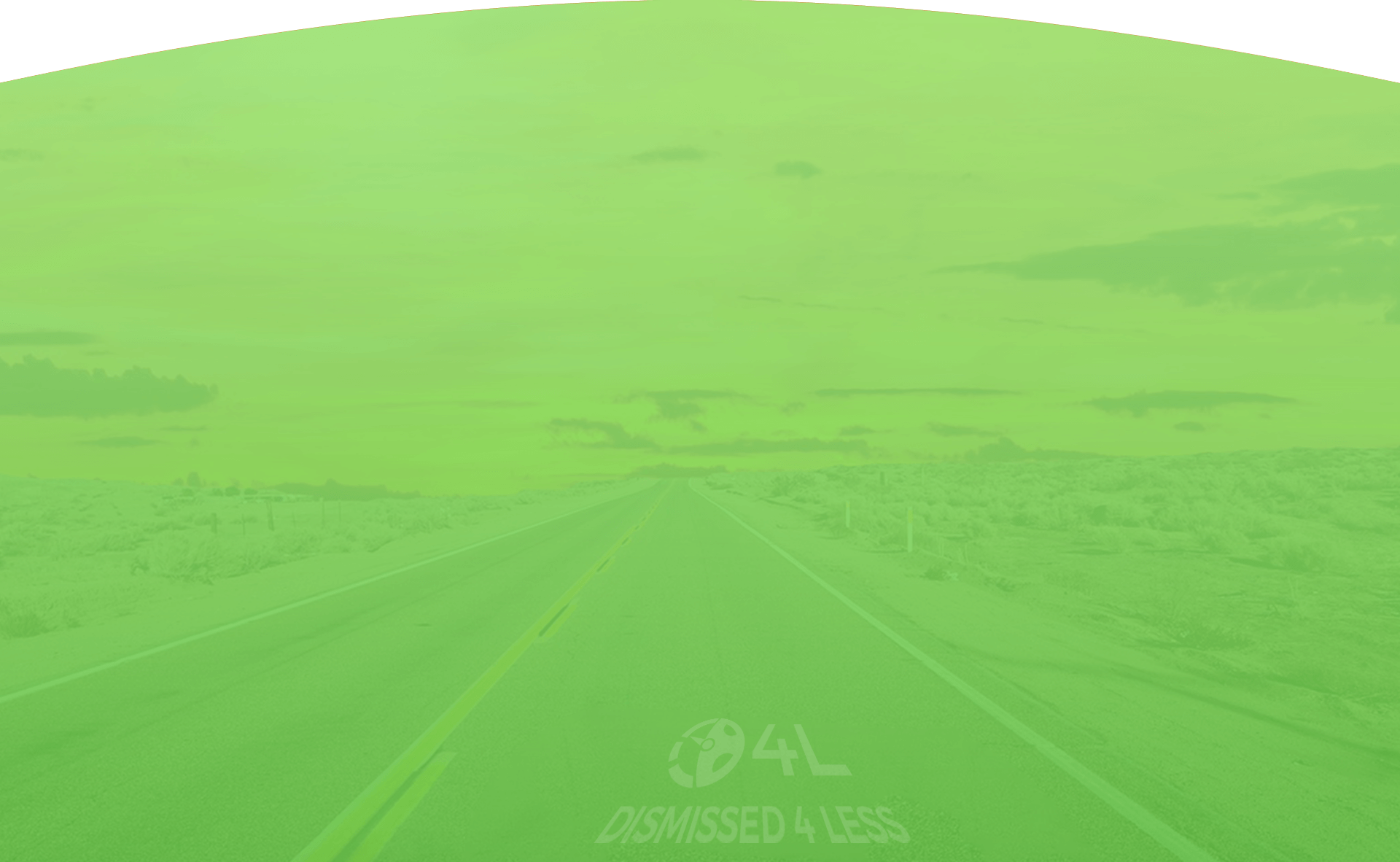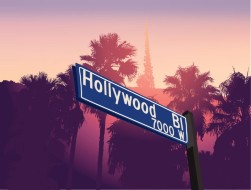Trial by Written Declaration in California: A Closer Look
A significant number of California drivers are just passing through our beautiful state. The Sierra Madre Mountains and area parks, like Death Valley, Yosemite, and the Sequoia National Forest, are very popular tourist destinations. Many truckers and other commercial drivers follow Interstate 15 from Nevada into the High Desert. Finally, people on business trips constitue much of the traffic on Bay Area or SoCal streets and highways.
These three areas are also prime traffic ticket zones. Local police in the Sierra Madre area are very aggressive in terms of speeding tickets. These little towns rely on speeding ticket revenue. The same thing applies to commercial drivers on Interstate 15. The combination of a steep downhill grade and a speed limit change makes the California/Nevada border one of the busiest speed traps in the state. Finally, in urban areas, the dreaded red-light camera tickets have spoiled countless vacations.
These tickets and situations are tailor-made for a Trial by Written Declaration (TBWD) pursuant to Section 40902 of the California Vehicle Code. A Trial By Written Declaration lets motorists challenge their traffic tickets without appearing in court. That’s a major advantage in places like the Sierra Madres. Many of the small towns along Highway 395, like Bishop and Independence, do not have full-time courts. Because of budget cuts, they are only open for a few hours a day on a few days of the week.
Trial By Written Declaration Procedure
Motorists must request a Trial by Written Declaration by the court appearance date on their traffic tickets. Technically, the request must be received by the appearance date. But it’s best to submit Form TR-205 in advance if possible. Generally, motorists must also remit the total bail amount to the court.
Along with the Trial By Written Declaration request, motorists can submit a statement of facts. photographs, or other addendum which sets forth their defense. More on that below.
Typically, a judge reviews the paperwork within 90 days. The officer must provide a written statement to the court as well. Significantly, there is no prosecutor and no defense lawyer present during this review. The only advocacy is the aforementioned statement of facts.
If the judge dismisses the ticket or finds the defendant not guilty, the ticket does not appear on your driving record, the court also returns the bail money, and that’s that.
If the judge reduces the fine, approves traffic school, or finds the defendant guilty, the motorist has two basic options. The motorist can accept the outcome or request a trial de novo. That means the court places the matter on the regular trial docket as if there were no previous proceedings. The motorist can move forward with a lawyer or personally appear for the new trial.
The bottom line is that a Trial by Written Declaration is risk-free. In a great number of cases, the Trial By Written Declaration is the best way to dismiss a traffic ticket in California.
Types of Traffic Tickets in California
Most people cannot travel more than a few blocks without violating some provision of the Vehicle Code. The two most common types of traffic tickets in California are probably the aforementioned speeding tickets and red light tickets. Not coincidentally, these tickets are among the most expensive types of citations in California. Fortunately, these citations are also among the easiest ones to defend via a Trial by Written Declaration.
Many people think a speeding ticket is not a big deal. It’s better to pay the fine and forget it, they believe. But the true cost of a speeding ticket is about thirty-three times the fine amount. Penalty assessments make up much of that amount. Furthermore, a speeding ticket might increase automobile insurance rates by over 40 percent. Most drivers must pay these higher rates for at least three years.
Red light camera tickets are not much better. The minimum fine alone is $490. It doesn’t matter if the motorist completely ignored the stop light, made a rolling right turn in the middle of the night, or barely missed a yellow light. All these violations are the same. Red light camera citations are moving violations. So, they could drive up insurance rates as well.
How to File a Trial by Written Declaration Request
First, examine the ticket and determine the court’s location. This step is not always as easy as it seems, especially if it is not clearly listed on the ticket. Many cities are partially in one court’s jurisdiction and partially in another one. Do not rely on Google Maps or another third-party source.
Next, write a short letter pleading not guilty and requesting a Trial by Written Declaration. You must use these words and the court must receive the letter by the ticket’s appearance date. Also include the full bail amount. A money order payable to the court is usually best. This letter is different from the statement of facts. We’ll get to that later.
After the clerk receives your letter, the clerk sends the forms to complete your Trial By Written Declaration request. Usually, these two forms are TR-200 (instructions and rules for a Trial by Written Declaration) and TR-205 (request for a TBWD). Generally, drivers have four weeks to return these forms and any supporting documents.
The completed and returned forms should lay out your defense. Some examples of some defenses are examined below. Chances are, if you have a valid defense to a red light or speeding ticket, it will be one of the ones we discuss. Do not forget to add an appendix, such as a website printout or photographs, as appropriate.
Stamps are cheap, so add plenty of postage. No one wants to lose a Trial by Written Declaration because the envelope did not have enough stamps and the post office didn’t deliver it.
Then you must wait. Sometimes, the judge examines Trial By Written Declaration requests as they come in. But more often, the judge waits until there are a number of requests, and then the judge reviews them all at once. Do not over call the court and constantly ask about the status. Such efforts place you on the clerk’s dirty list, and you do not want to be on that list. If you want confirmation that the court received your forms and statement, you can send them registered mail, which is recommended.
After the judge reviews the Trial By Written Declaration, you must choose what to do next, based on the judge’s decision. If the decision was unfavorable (i.e. the judge determined you were guilty), you probably want to request a trial de novo. The court must receive this request within twenty days.
Generally, a trial de novo is a good idea as it gives you a new chance at a dismissal of your traffic ticket. If the judge looked at your Trial By Written Declaration defense and found you guilty, the new trial will give you a new opportunity with a new judge. Regardless if you have something new to present, a trial de novo might not be a waste of time as it allows you a new opportunity to have your case heard. Keep in mind that with a new trial an in person appearance will be required, that’s especially important, as at a live trial, the prosecutor will be present and can present evidence and make legal arguments.
If you accept the judge’s finding, which is probably a fine and permission to attend traffic school, closely follow the court’s instructions. If you fail to timely attend traffic school, do not remit any fine balance, or fall short in any other way, the state could unilaterally suspend your drivers’ license. California no longer suspends drivers’ licenses for failure to pay fees. But the state could suspend your license for failing to obey a court order. There is a very fine line here.
California is a Drivers’ License Compact state so, if you have an out-of-state license, do not think you are immune from drivers’ license problems. California shares adverse license information with most other states.
How to Defend a Traffic Ticket with a Trial By Written Declaration
These two types of tickets are excellent examples of how to handle citations with a Trial by Written Declaration. A few minutes of homework could significantly affect the outcome.
Apparent Defenses
Spelling mistakes and other typos on a speeding ticket are probably the best example of an apparent defense. However, contrary to popular myth, not every such mistake is fatal. A legal doctrine called idem sonans sometimes comes into play. Idem sonans is Latin for “sounds alike” and Legalese for “close enough.” Some classic examples include Bret/Brent or Smith/Smyth. Mistakes like these do not invalidate citations.
However, if the grammar mistake causes a variance between the pleadings and the proof, the judge might throw out the ticket. For example, if the officer wrote that the defendant was driving a Chevrolet and the motorist drove a Ford, there might be a fatal variance.
Recall that, in a Trial by Written Declaration, there is no in person prosecutor; the officer must also provide a written statement for the Trial by Written Declaration. Normally, prosecutors can use trial amendments to fix such mistakes, especially since California traffic tickets are not technically criminal matters. But if there’s no prosecutor, there’s no one to amend the pleadings once the Trial by Written Declaration is granted and the statement is submitted, so judges can only look at what is in front of them.
Some red light camera citations have similar defects. Private vendors own and operate red light cameras. These private entities cannot enforce California public laws. Normally, vendors get around this requirement by funneling citations through the city or county. But some vendors take shortcuts and send the citations themselves. These citations are illegal, and a judge will probably throw them out of court.
Trial by Written Declaration and Advocacy Defenses
Apparent defenses require nothing other than judicial review. That’s why they work so well in Trial By Written Declaration submissions. Advocacy defenses are the next level up. Motorists must convince judges that they have valid defenses. Motorists have a big advantage here. They can submit supporting documents, and the state cannot say anything in response.
The mistake of fact defense is a good illustration, particularly in speeding tickets. We all know that ignorance of the law is no excuse. Ignorance of fact, however, is different. So, it’s no defense to say “I didn’t know speeding was illegal.” Everyone must follow the laws. That’s the essence of the rule of law.
But, it might be a defense to say “I didn’t know the speed limit was 65mph.” Some specific examples include:
- The sign had been vandalized, or better yet torn down completely, so it was not visible,
- Brush or another obstruction made it difficult to see the sign,
- The sign was too far away from the road to see, or
- The sign was in the wrong place or did not have the legally-correct wording.
As a rule of thumb, the “I didn’t see the sign” defense may hold up in court if the sign was at least 50 percent obscured. So, in these cases, the Trial By Written Declaration application must include photographs from favorable angles.
Advocacy defenses, like mistake of fact, do not come up very often in red light camera citations. Your best bet is usually an obvious defense or an advanced defense. More on that below.
Advanced Defenses
Not all speeding tickets are created equally. There is a significant difference in enforcement methods, as follows:
- Pacing: Essentially, pacing is synonymous with guessing. The officer uses his/her own speed to estimate the speed of an approaching or passing car. It’s quite difficult to pace another vehicle’s speed when one is standing still. Additionally, some vehicles, like muscle cars, sound faster than they are travelling. That could affect a pacing guess.
- RADAR: The officer aims a radar gun at an approaching vehicle and the radar gun calculates the vehicle’s speed. This enforcement method is very precise, assuming the motorist was the only vehicle in the vicinity. If an officer pointed a radar gun at a cluster of vehicles, the results prove that one vehicle was speeding, but the results don’t conclusively establish which vehicle was speeding.
- LIDAR: Laser enforcement is advanced RADAR enforcement. The officer aims a laser beam at the vehicle’s license plate, and the gadget calculates the vehicle’s speed. This method conclusively establishes that the defendant was speeding. However, LIDAR devices are quite sophisticated. They require lots of maintenance and a highly-skilled operator. Both these things might or might not be present.
What does all this mean? The citation usually includes the enforcement method. Usually, pacing tickets only hold up in court if the officer testifies about his/her experience and the pacing method used. In a Trial by Written Declaration the officer must provide this in a written statement. Radar and LIDAR citations are harder, but not impossible, to successfully challenge in this context.
The engineering study defense is a deeper defense. It requires some digging, but it’s often very effective in a Trial by Written Declaration.
Today’s cars are much safer than the ones that were on the road twenty-five years ago. Yet for the most part, speed limits have not changed much over that time period, especially in urban areas.
If the local speed limit is different from the presumptive speed limit listed under state law, and there is no recent engineering study justifying the lower limit, the local limit is invalid.
There are also some advanced defenses to red light ticket citations. The Trial by Written Declaration judge only considers the written statements provided when reviewing these cases. So, these defenses are usually effective as well.
Many people run red lights because the yellow light is too short. They enter the intersection while the light signal is yellow, and before they reach the end of the intersection, the light turns red. Even a few milliseconds difference could significantly increase the number of red light citations.
State law requires yellow lights to last a certain amount of time. If the yellow light at that particular intersection was not long enough, any red light citation could be considered invalid.
The aforementioned public/private issue sometimes comes up in this context as well. As mentioned, red light camera vendors do not have the legal authority to enforce California traffic laws. So, they are supposed to have law enforcement officers review footage before they issue citations.
Cursory review is not enough. If an officer looks at thousands of videos a day, it’s rather obvious that the officer is only glancing at them. In other words, “traffic ticket mills” are illegal. Unless an active law enforcement officer carefully reviewed the footage, the citation is not likely to hold up in court.
Summary
Generally, the Trial by Written Declaration is a cost-effective way to challenge traffic tickets in California. A number of defenses are available, the prosecutor cannot challenge your evidence or make legal arguments in person, the officer must provide a written statement for the Trial by Written Declaration, and if you lose, you can simply request another trial.
However, many Trial By Written Declarations fail because of technical problems or a strong defense is not submitted. Perhaps the motorist did not fill out the forms correctly or perhaps the motorist did not properly articulate the defense.
Dismissed 4 Less solves these problems. We take care of all the details. Furthermore, because of our experience, we know how to present defenses that resonate with judges. Given the high cost of a ticket, the possibility of points on your license, and all the other adverse possibilities, it’s a bad idea to take chances with your citation. So, reach out to us instead.







